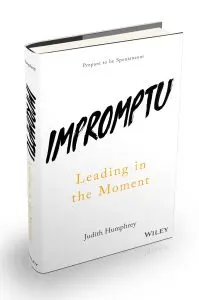Maybe you think you’re an elegant speaker. You choose the right words and always string together elegant sentences. But if what you’re saying doesn’t follow some sort of coherent structure, so it doesn’t matter how beautiful your turn of phrase–you won’t be able to make a compelling case for anything. Here’s why you need structure no matter what you’re hoping to communicate, and four great options you can draw on.
Structure Helps You Prove, Not Assert
The starting point of persuasion is having a point–a message you believe in. Then you need a sound structure that lets you get your message across. If you say to a colleague, “We need to work on our client pitch,” and you don’t explain why, the thought dangles in the air. If you tell an employee, “I am confident you can lead this project,” your listener will expect you to explain the reasons you believe that. Hence the need for proof points. Stating your message is rarely sufficient. You need evidence that encourages listeners to buy into that point of view. So after presenting what you believe, share why you believe it.
Related: How To Get Straight To The Point No Matter What You’re Trying To Say
Structure your script in advance when you know you’ll have to say a few words or field questions. But even when you have little warning and find yourself speaking impromptu, you can still create a quick set of bullet points–on paper or in your head–that support your argument.
Adeola Adebayo, a principal at OMERS, one of Canada’s largest pension funds, told me she has to come up with proof points like these several times a day. Her boss might come to her in the hall and say, “I just read something in the news about Company X. I know you’re following that sector. What do you think about this company?” She’ll reply, “Yes, we invested in it and it’s still a good investment.” But she knows that just delivering this assertion isn’t enough. “My boss would expect proof,” Adebayo explains. “So I’d say, ‘There are several reasons Company X remains a good investment.'” She’d then run through those bullets:
- First of all, it’s the largest company in its sector in our country.
- Second, it generates significant cash flows.
- Third, although it operates in a volatile industry, it has strong liquidity.
- Fourth, it has the support of the investment community and access to the capital markets.
She might conclude with: “In fact, I’d suggest we increase our investment in Company X.” Sound simple? It can be if you know what your options are for structuring your argument.
For starters, make sure your bullet points argue your case and are not simply topics. Suppose Adebayo had responded to her boss’s question with, “There are three aspects of Company X that I’ve looked into: its financial results, its current assets, and its competitive place in the markets.” That approach would offer information but no conclusion. It makes no point.
Related: These Expressions Make You Sound Like You Don’t Know What You’re Talking About

Four Ways To Organize Your Ideas
Building your case involves choosing the right pattern of organization for your points–and with impromptu speaking, you’ll often have to pick one in the blink of an eye. The secret is to learn the following four patterns and practice drawing on them repeatedly, choosing the right structure more or less intuitively as soon as you’re asked to share your thoughts.
1. Reasons. This pattern backs up your main point with reasons. Suppose your message is, “I believe we need a more inclusive working environment.” Your bullet points might be:
- First, we’re way behind in hiring women and minorities.
- Second, a diverse workforce leads to a better bottom line.
- Third, inclusivity is the right thing to do!
Each bullet backs up why you see the issue the way you do.
2. Ways. This structure shows the ways your main point can be acted upon. Or it can refer to things that have to be done. Suppose your message is, “I know we can fix this situation for our customer.” Your bullet points would lay out the steps you might take to accomplish that:
- First, we will interview our customer.
- Second, we’ll assign a team to resolve the situation.
- Third, we will follow through and make sure it’s fixed.
3. Situation/Response. Use this pattern when your message refers to a situation or challenge to be acted upon. It’s similar to the “ways” approach but focuses more on reacting to a particular circumstance than on presenting a sequential course of action: the first bullet describes the situation or challenge, while the second presents the response. Your message might be, “Although last year’s results came in below expectations, we’ve taken steps to turn the division around.” Your bullet points would sound like this:
- Adverse economic conditions resulted in earnings that were 10% below projections last year
- But our new product line and cost efficiencies should allow us to meet or exceed expectations this year.
4. Chronological. This pattern takes your listeners through a progression in time that elaborates your message. Say that your point is, “We have met our project commitments on schedule.” Your bullet points might sound like this:
- When we launched this project, we said we would complete the installation in three years.
- In the first year we achieved the goal we set.
- In the second year we were ahead of schedule.
- Today all of our commitments have been met.
To decide which structure to use, pause after the initial statement that delivers your message, and then choose which pattern you want. Make sure your points are arguments, not topics. That way you’ll be persuading, not just informing. If you use this approach for both prepared and impromptu remarks, eventually the decision will become second-nature.
These four approaches may sound simple–and they are–but too many speakers miss them completely when they fixate on their actual words, especially under pressure to speak off the cuff. Having a message and bullet points to back it up will help you fill in the words as you speak–no matter what you’re trying to say, or on how little notice you’re asked to say it.
This article is adapted with permission of the publisher, John Wiley & Sons, Inc., from the forthcoming Impromptu: Leading in the Moment by Judith Humphrey. Copyright© 2018 by John Wiley & Sons, Inc. All rights reserved. This book is currently available for preorder and will be available all bookstores and online booksellers on December 11.
Recognize your brand’s excellence by applying to this year’s Brands That Matter Awards before the early-rate deadline, May 3.
